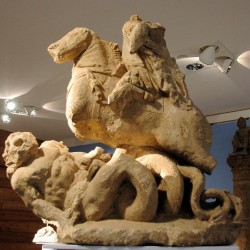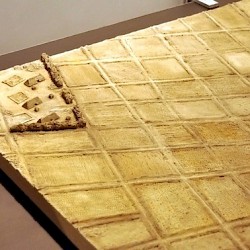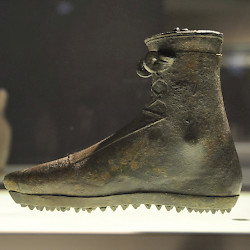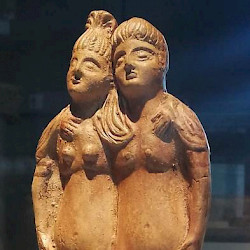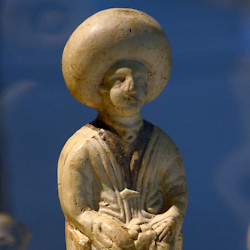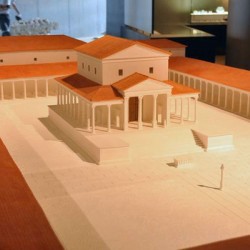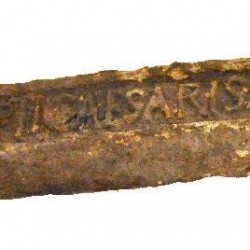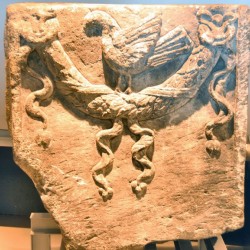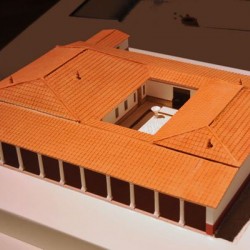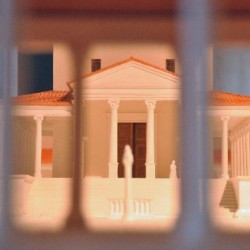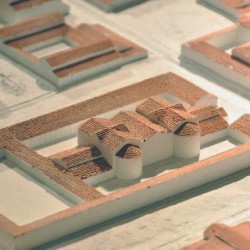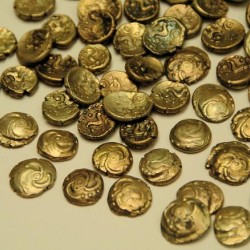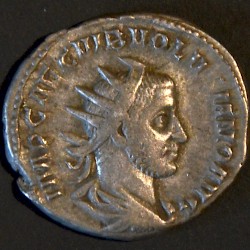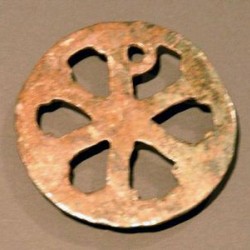Tongeren, Gallo-Romeins Museum
Q1492516Press conferences are always terrible, but press conferences in museums exceptionally so. The only way to survive them is to play buzzword bingo: the architect will of course speak about his “concept”, the designer mentions “my art”, the director is “grateful to the sponsors”, and the game is over – all participants win – when the curator speaks about the “interdisciplinary approach”.
Press Conference
So here I am, on a sunny morning, listening to a press conference about the reopening of the Gallo-Roman Museum in Tongeren, which has been closed for three years. I would have declined to go if I hadn’t heard the director, Carmen Willems, before, when she took part in a debate in my favorite pub, De Brakke Grond.
Things don't start well. Among the speakers is a politician who wants us to think of the new building no longer as a museum, because museums are so stodgy (“oubollig”). When he also mentions the “beleefbaarheidswaarde” (an untranslatable barbarism), I notice that several journalists stop writing, and personally, I am tempted to shout “bingo!” This reminds me too much of the Dutch state secretary Rick van der Ploeg who lamented that archaeology ought to be sexier.
The other speakers are far more interesting. It is the architect, Alfredo De Gregorio, who impresses me most. He is remarkably modest, stressing that the exposition rooms were at the heart of the design, and that the other things were derived from this principle. He also wanted to keep intact the little lane along the Basilica of Our Lady, to which the people of Tongeren are sentimentally attached. All this is quite reassuring; I have seen too many modern buildings that look great but are absolutely impractical.
Tour
Even better: Mr De Gregorio has succeeded brilliantly. The new building indeed fits in what already exists, well-integrated into the city, not dominating it. It is also a “transparent” building: it is easy to find your way. I know this, because I arrived an hour early. The cleaners were still working and no one was there to receive the journalists, but still, I easily found the place where we were expected to gather.
The new exposition tries to tell an interesting story, which has, so to speak, four chapters, about four decisive moments in the history of this part of Belgium: the arrival of the first humans, the beginnings of agriculture, the origin of social hierarchy, and the arrival of Rome. The artifacts – about twice as many as before – have been selected to illustrate the story. Some well-known objects, like the Tongeren milliarium, no longer fit, and have been left out (it was a copy anyhow; the original is in the Koninklijke Musea voor Kunst en Geschiedenis in Brussels). The famous dodecahedron, which used to be the centerpiece of the old exposition, now rests quietly among other objects. Nothing special about it now.
The objects are shown in sober displays. You will not be walking through poorly illuminated rooms in which only a couple of objects are to be seen in low-key light. That’s very beautiful, but it’s impractical. I recall with horror “L’Or des Thraces” at the Musée Jacquemart-André in Paris, in which people could not read the explanatory signs, so that they tried to read their leaflets using the light of the displays, blocking sight for anyone else. The Gallo-Roman now chooses a more conservative approach.
Much energy has been devoted to the nice drawings, animations, movies, and the splendid dolls – I was so impressed by the hunters in the first room that I forgot my notebook. The absolute winner is a group of models, including one of Tongeren in 150 AD – which, I hope, will remain in better shape than the comparable model wasting away at the crossing of the Rode Kruislaan and the Kruissteenweg.
Future
During the press conference, the politician said that the Gallo-Roman Museum could be among the main archaeological museums of Europe. I don’t think this will happen. Tongeren has nothing to be ashamed of – ceramics, bronzes, glass, tombs, everything is there. But to be a top museum, you need to have something big and impressive like, say, the Mainz Pedestals, Bonn‘s tomb of Marcus Caelius, or Cologne‘s Dionysiac Mosaic. The power of Tongeren lies somewhere else: the museum tells a well-balanced story, without undue focusing on one object.
The renewal has cost millions of euros, and in return, we now have a really state-of-the-art museum. So where is that art standing? I learned that if you spend enough money, you can create a new building, where it is easy to find your way, where light is good, and where everything benefits from an excellent presentation. I learned that dolls and models continue to amaze and are still the best way to show how things were. And I am delighted to see the return of well-illuminated rooms. This is what a modern museum looks like, and I am enthusiastic.
Where shall we go from here? I can only hope that we will also witness the return of old-fashioned explanatory signs, or an alternative like leaflets, or making accessible the relevant pages of the catalog. This may not matter to most visitors of the museum, but among the visitors are also professional archaeologists and historians, who want to know that this amphora is a Dressel-20 and that glass bottle an Issings-10. Information like this also helps a guide to broaden his/her story and link it to other information people might have – given the right clue, a guide can connect the Issings-10 to the Biblical story about the alabastron broken to anoint Jesus. In other words, it helps to link the story presented by the museum to the stories people already know.
This is a minor quibble, however. Tongeren, Limburg, and the team of the Gallo-Roman Museum are sincerely to be congratulated.
This museum was visited in 1999, 2005, 2009, 2010, 2012, 2018, 2019.
